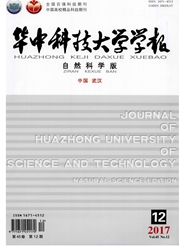

 中文摘要:
中文摘要:
一个复合系统的电的进入一个 thicknessshear 模式(TSM ) 填写了石英水晶共鸣器(QCR ) 和一连串的表面粘弹性的微光束(MB ) 被学习。MB 的管理方程在考虑从 Timoshenko 横梁理论被导出砍变丑。电的进入以表面环氧基树脂树脂(SU-8 ) 的物理性质直接被描述从电子上强迫的颤动分析的 MB。惯性效果和 MB 的限制效果在复合 QCR 系统的反响的频率和进入上生产竞争影响,这被发现。由进一步比较从 Euler 横梁模型与那些从 Timoshenko 横梁模型计算的数字结果, shear 变丑被发现导致一个进入系列的一些偏差。偏差被揭示在进入山峰附近明显并且当 MB 的自然频率与 QCR 的基本频率相同时,到达最大值。而且, MB 的一个更高的顺序颤动模式在回声对应于更大的偏差。
 英文摘要:
英文摘要:
The electric admittance of a compound system composed of a thickness-shear mode (TSM) quartz crystal resonator (QCR) and an array of surface viscoelastic micro-beams (MBs) is studied. The governing equations of the MBs are derived from the Timoshenko-beam theory in consideration of shear deformation. The electrical admittance is described directly in terms of the physical properties of the surface epoxy resin (SU-8) MBs from an electrically forced vibration analysis. It is found that both the inertia effect and the constraint effect of the MBs produce competitive influence on the resonant frequency and admittance of the compound QCR system. By further comparing the numerical results calculated from the Timoshenko-beam model with those from the Euler-beam model, the shear deformation is found to lead to some deviation of an admittance spectrum. The deviations are revealed to be evident around the admittance peak(s) and reach the maximum when a natural frequency of the MBs is identical to the fundamental frequency of the QCR. Besides, a higher order vibration mode of the MBs corresponds to a larger deviation at the resonance.
 同期刊论文项目
同期刊论文项目
 同项目期刊论文
同项目期刊论文
 The fifth-order overtone vibrations of quartz crystal plates with corrected higher-order mindlin pla
The fifth-order overtone vibrations of quartz crystal plates with corrected higher-order mindlin pla On the Nonlinear Behavior of a Multilayer Circular Piezoelectric Plate-Like Transformer Operating Ne
On the Nonlinear Behavior of a Multilayer Circular Piezoelectric Plate-Like Transformer Operating Ne Analysis of a Monolithic, Two-Dimensional Array of Quartz Crystal Microbalances Loaded by Mass Layer
Analysis of a Monolithic, Two-Dimensional Array of Quartz Crystal Microbalances Loaded by Mass Layer Solutions of nonlinear thickness-shear vibrations of an infinite isotropic plate with the homotopy a
Solutions of nonlinear thickness-shear vibrations of an infinite isotropic plate with the homotopy a Correction factors of the mindlin plate equations with the consideration of electrodes [Corresponden
Correction factors of the mindlin plate equations with the consideration of electrodes [Corresponden Lateral-Field-Excited Bulk Acoustic Wave Sensors on Langasite Working on Different Operational Modes
Lateral-Field-Excited Bulk Acoustic Wave Sensors on Langasite Working on Different Operational Modes Frequency Shift of a Crystal Quartz Resonator in Thickness-Shear Modes Induced by an Array of Hemisp
Frequency Shift of a Crystal Quartz Resonator in Thickness-Shear Modes Induced by an Array of Hemisp Characterization of functionally graded elastic materials using a thickness-shear mode quartz resona
Characterization of functionally graded elastic materials using a thickness-shear mode quartz resona Electromechanical impedance response of a cracked functionally graded beam with imperfectly bonded p
Electromechanical impedance response of a cracked functionally graded beam with imperfectly bonded p 期刊信息
期刊信息
